
Beans
(Phaseolus vulgaris)
Like corn, beans were domesticated in Mexico, and then made their way through the Southwest and into the Northern Plains, before showing up in the Eastern Woodlands. However, beans show up in the Southeast later than corn or Mexican squash. Beans are not found archeologically until around AD 1350.
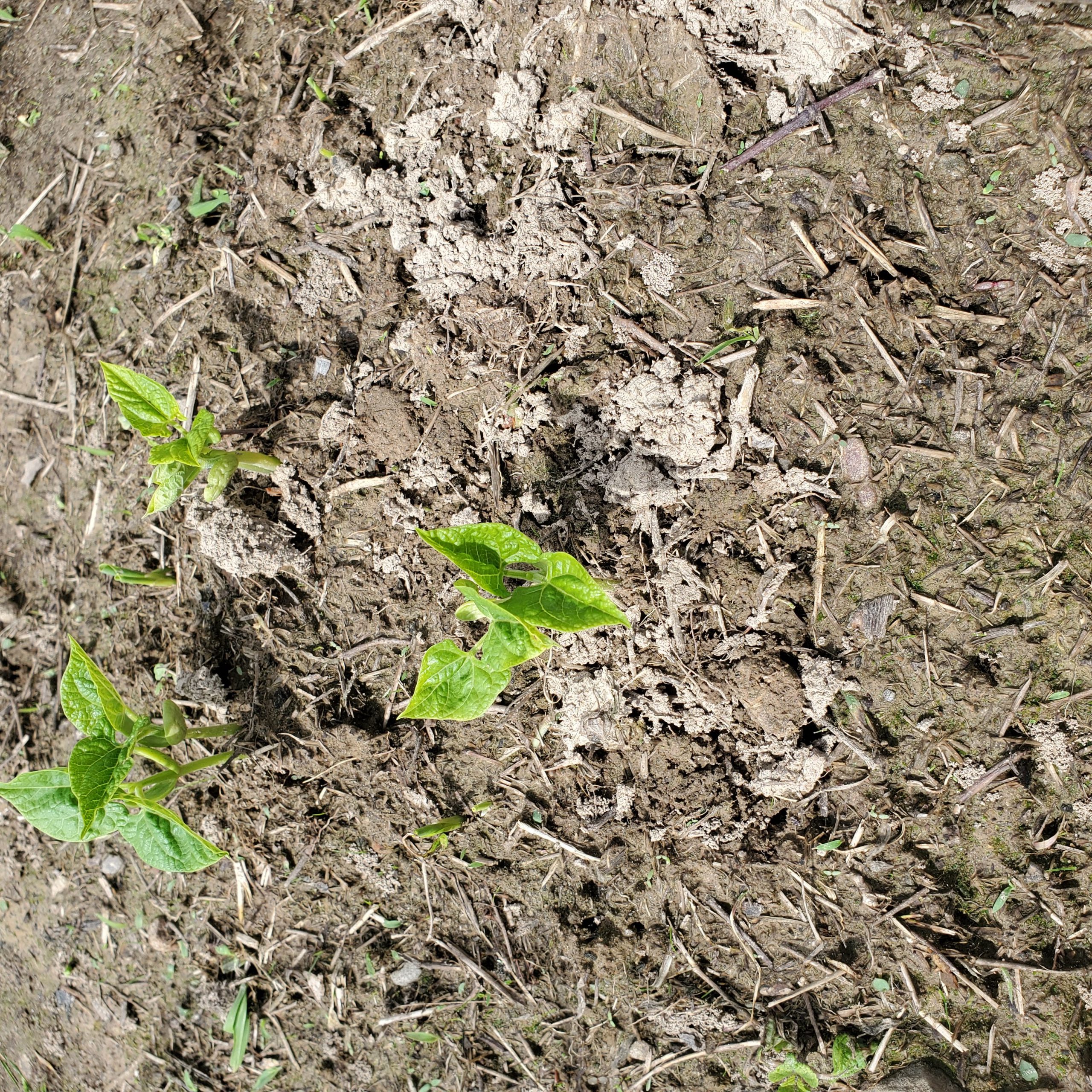
Newly sprouted beans.
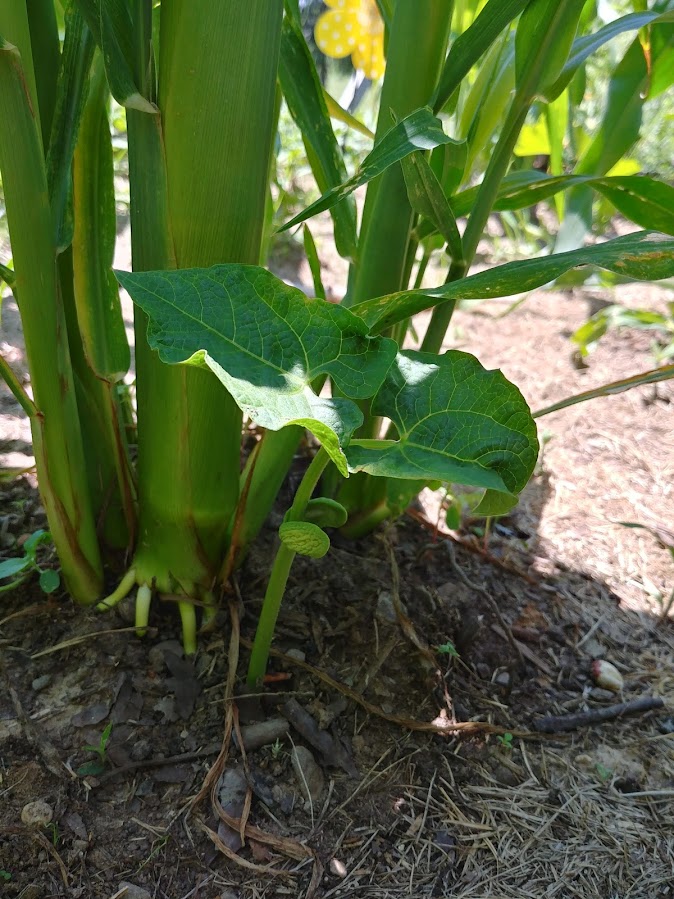
Beans growing up under the shelter of a corn plant.

Beans in corn
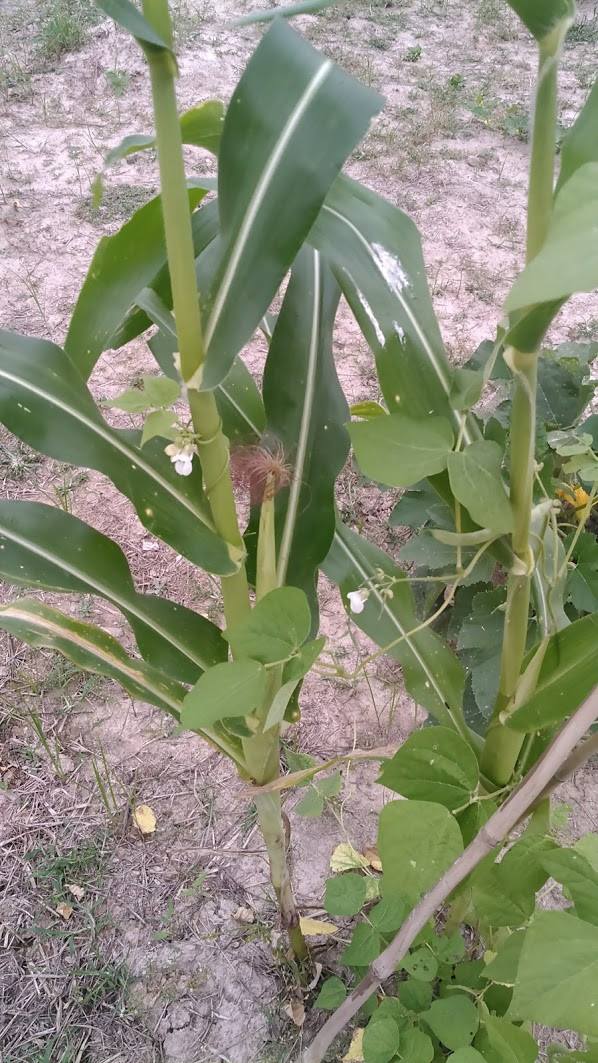
Beans growing up corn stalk. Note the white bean flowers.
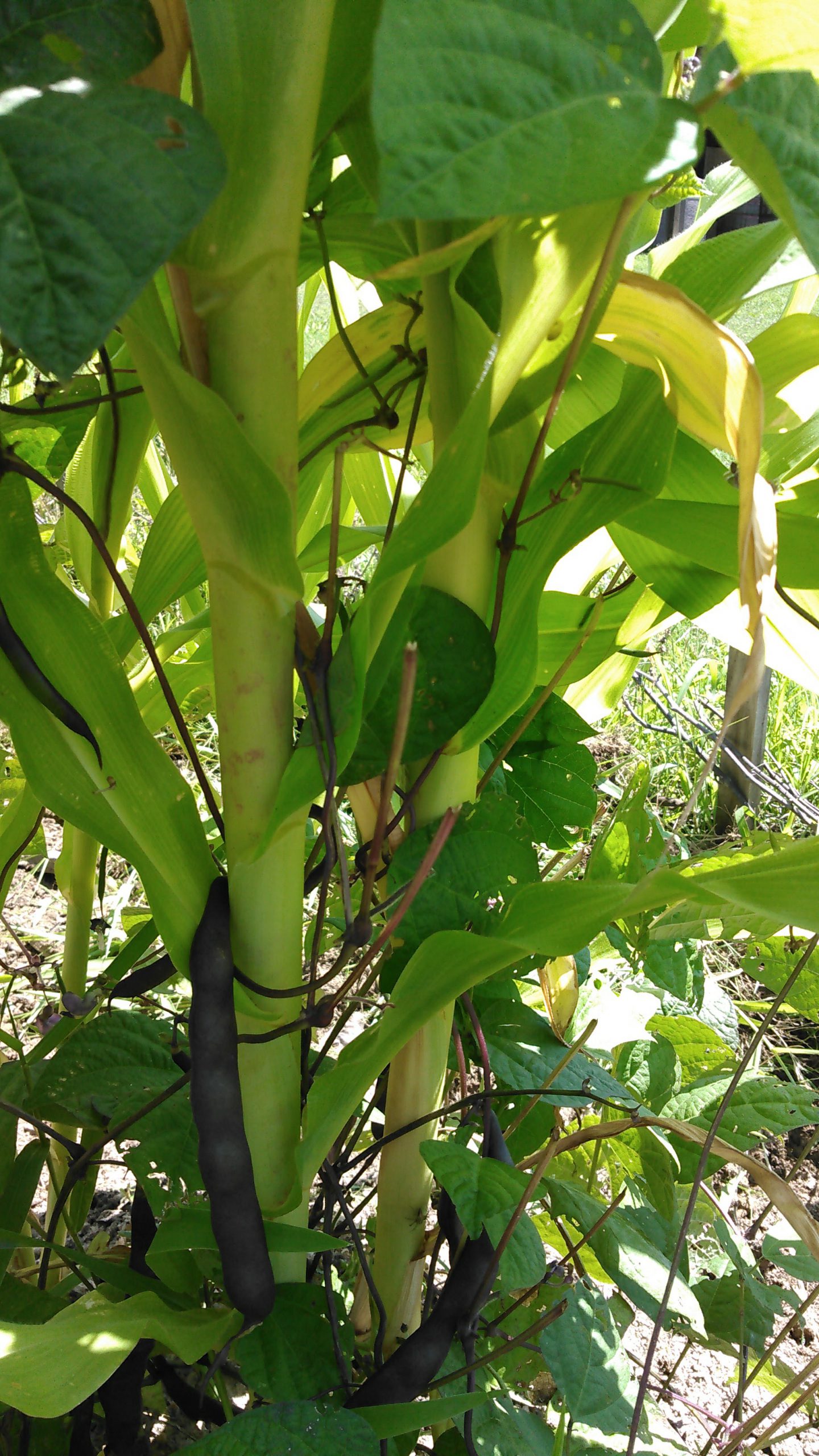
Bean pods can be many different colors and patterns. These are a dark purple.

Beans growing up a corn stalk.

To harvest beans for storing, you can leave them on the vine until they dry out.
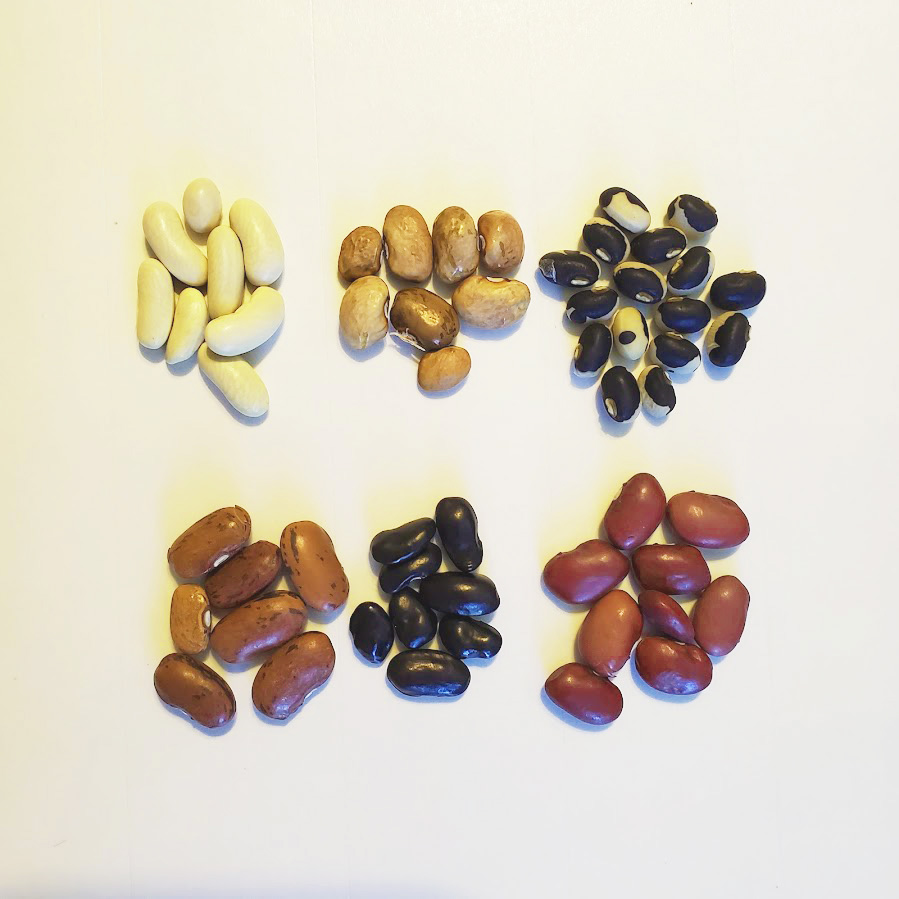
Like bean pods, the beans themselves can be many different colors and patterns depending upon the variety.
Beans References
Brown, Cecil H.
2006 Prehistoric Chronology of the Common Bean in the New World: Linguistic Evidence. American Anthropologist 108(3):507-516.
Hart, John P.
2021 The Effect of Charring on Common Bean (Phaseolus vulgaris L.) Seed Morphology and Strength. Journal of Archaeological Science: Reports 37:1-12.
Hart, John P., David L. Asch, C. Margaret Scarry, and Gary W. Crawford
2002 The Age of the Common Bean (Phaseolus vulgaris L. ) in the Northern Eastern Woodlands of North America. Antiquity 76:377-385.
Monaghan, G. William, Timothy M. Schilling, and Kathryn E. Parker
2014 The Age and Distribution of Domesticated Beans (Phaseolus vulgaris) in Eastern North America: Implications for Agricultural Practises and Group Interactions. Midwestern Archaeological Conference Occational Papers 1: 33-52.
Scarry, C. Margaret, and Elizabeth J. Reitz
2005 Changes in Foodways at the Parkin Site, Arkansas. Southeastern Archaeology 24(2):107-120.